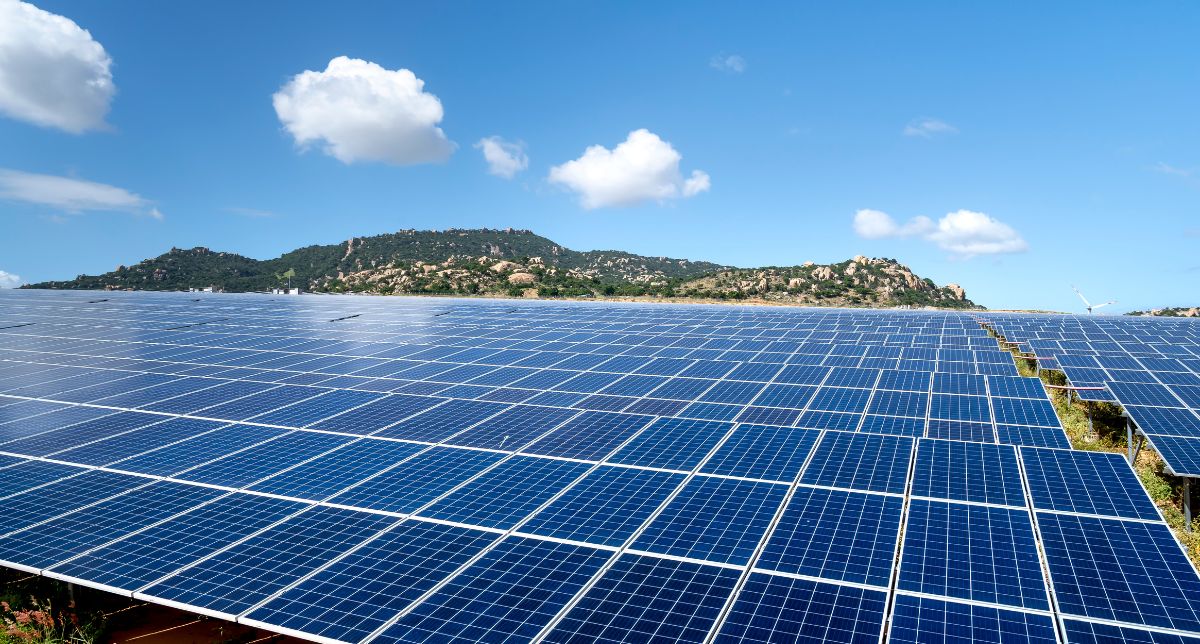In a country with continental dimensions and abundant sunshine, solar energy has moved beyond being a promise to becoming one of the pillars of Brazil’s energy matrix. While the world searches for solutions to the climate crisis, Brazil is advancing rapidly—not only expanding its capacity but also innovating in how it does so. The most recent and emblematic proof of this comes from the “Marvelous City,” where construction of the Solário Carioca is already underway, turning an environmental liability— a decommissioned landfill—into a clean energy asset and symbolizing a smarter, more sustainable future.
The Sun as Protagonist: Numbers of an Emerging Power
Talking about solar energy in Brazil today means talking about superlative numbers. According to the latest data from the Brazilian Solar Photovoltaic Energy Association (ABSOLAR), the country has already surpassed 42 gigawatts (GW) of operational solar capacity. This figure—which includes large centralized plants as well as distributed generation systems on rooftops, façades, and small plots of land—places Brazil in a leading position on the global stage.
To put this into perspective, this capacity already represents more than 20% of the national electricity matrix, surpassing traditional sources and consolidating solar as the country’s second-largest energy source, behind only hydropower. Since 2012, the sector has attracted more than R$ 220 billion in new investments, generating over 1.4 million jobs in total. It is a silent revolution happening on household rooftops, in industrial warehouses, and now, in places once deemed unthinkable.
This transition is being driven by a combination of factors: the sharp decline in photovoltaic panel costs, society’s growing environmental awareness, and regulatory milestones such as Law 14.300/2022, which established the legal framework for distributed generation. The result is a vibrant market, where more than 3.6 million consumer units already benefit from energy credits, reducing their electricity bills while contributing to a cleaner and more resilient grid.
Solário Carioca: Urban Alchemy Turning a Problem into a Solution
Within this dynamic landscape, the Solário Carioca project stands out as a beacon of innovation. Located in the Santa Cruz district in Rio de Janeiro’s West Zone, the project—whose construction is already underway—consists of installing a 5-megawatt (MW) solar power plant on the site of a former landfill. This initiative, a Public-Private Partnership (PPP) awarded to the Rio Solar Consortium, is a brilliant example of circular economy principles and the repurposing of degraded urban spaces.
Decommissioned landfills are a challenge for any public administration. Contaminated soil and unstable terrain severely restrict land use options, leaving them as visible “scars” in the urban landscape. Rio de Janeiro’s solution is genius in its simplicity: covering the site—unsuitable for farming, housing, or recreation—with over 11,000 solar panels. Where there was once an environmental liability, there now rises a clean energy source that will prevent the emission of 40,000 tons of carbon annually.
The business model is equally smart. With a private investment of R$ 45 million, the plant will generate electricity injected into the utility grid, creating credits to offset the consumption of public buildings. The city estimates annual savings of R$ 2 million, totaling R$ 62 million over the 25-year concession. This energy will be enough to power, for instance, 45 municipal schools or 15 Emergency Care Units (UPAs), freeing up budget resources that can be reinvested in essential public services.
The project, now in full construction phase, is not just a win for Rio but a model for Brazil. The initiative already inspires plans for an even larger plant at the iconic Gramacho landfill, demonstrating the potential to replicate this solution across hundreds of other decommissioned landfills nationwide.
The Future is Hybrid and Decentralized
The success of Solário Carioca and the exponential growth of solar energy in Brazil point to a future in which energy generation will become increasingly decentralized, democratic, and integrated into both urban and rural landscapes. The combination of large power plants with micro and mini distributed generation creates a more robust grid, less dependent on long transmission lines and on the climatic conditions of a single region.
Projects that integrate solar power with other technologies—such as battery storage and green hydrogen production—are already under development and promise a new wave of innovation. Brazil, with its abundance of sunlight, land, and drive to innovate, is uniquely positioned not only to meet its climate goals but to become a global leader in the low-carbon economy.
The transformation of an old landfill into a source of light and savings is the perfect metaphor for the moment we are living in. It proves that with creativity, technology, and political will, we can turn our greatest problems into our brightest solutions. The sun, always a hallmark of Brazil, now lights the way to a more prosperous and sustainable future.

Comment